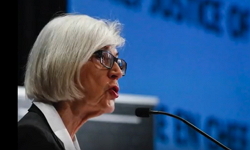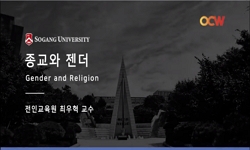To what extent the legislature represents the views of all social groups is a central question in multiethnic societies like Nepal. The results from descriptive and inferential statistical analysis of all representatives from 1959 to 2013 show the exi...
http://chineseinput.net/에서 pinyin(병음)방식으로 중국어를 변환할 수 있습니다.
변환된 중국어를 복사하여 사용하시면 됩니다.
- 中文 을 입력하시려면 zhongwen을 입력하시고 space를누르시면됩니다.
- 北京 을 입력하시려면 beijing을 입력하시고 space를 누르시면 됩니다.


The question of equal representation of citizens in the legislature of Nepal: rhetoric and reality
한글로보기https://www.riss.kr/link?id=A106229211
-
저자
Ganesh Prasad Pandeya (National Graduate Institute for Policy Studies (GRIPS), Tokyo, Japan) ; Tatsuo Oyama (National Graduate Institute for Policy Studies (GRIPS), Tokyo, Japan)
- 발행기관
- 학술지명
- 권호사항
-
발행연도
2019
-
작성언어
English
- 주제어
-
등재정보
KCI등재,SCOPUS,ESCI
-
자료형태
학술저널
-
수록면
45-69(25쪽)
-
KCI 피인용횟수
0
- 제공처
-
0
상세조회 -
0
다운로드
부가정보
다국어 초록 (Multilingual Abstract)
To what extent the legislature represents the views of all social groups is a central question in multiethnic societies like Nepal. The results from descriptive and inferential statistical analysis of all representatives from 1959 to 2013 show the existence of a prolonged unequal representation of caste/ethnic groups in the legislature of Nepal. A few subgroups of peoples have historically created a ‘creamy layer’ throughout all political systems. Although women and some excluded identities have gained substantial seats in the later period, progress for many groups, particularly historically marginalized ones, has been far too slow. The representation patterns are largely associated with a design of political institutions, such as electoral system and ethnic quotas, as well as the socioeconomic status of a group linked to poverty, wealth, adult literacy, and human development. These findings suggest that the chances of equal representation appear not just to the worth of group effort rather than its ability to influence the political process through power and resources. Thus, reforming political institutions, particularly the electoral systems, and improving the socioeconomic status of women and excluded identities, all of which demand strong political will and commitment, may narrow down inequality in political representation.
참고문헌 (Reference)
1 Reynolds, A., "Women in the legislatures and executives of the world: Knocking at the highest glass ceiling" 51 (51): 547-572, 1999
2 Inter Parliamentary Union, "Women in national parliament, situation as of January 2009"
3 Acemoglu, D., "Why nations fail, the origins of power, prosperity, and poverty" Crown 2012
4 Wolfinger, R. E., "Who votes?" Yale University Press 1980
5 Schedler, A., "What is democratic consolidation?" 9 (9): 91-107, 1998
6 Verba, S., "Voice and equality : Civic voluntarism in American politics" Harvard University Press 1995
7 World Bank, "Unequal citizens: Gender, caste and ethnic exclusion in Nepal" World Bank 2006
8 Lawoti, M., "Towards a democratic Nepal: Inclusive political institutions for multicultural society" Sage 2005
9 Thomas, S., "The impact of women on state legislative policies" 53 (53): 958-976, 1991
10 Johnson, G., "The house as a stepping stone to the senate:Why do so few African American house members run?" 56 (56): 387-399, 2012
1 Reynolds, A., "Women in the legislatures and executives of the world: Knocking at the highest glass ceiling" 51 (51): 547-572, 1999
2 Inter Parliamentary Union, "Women in national parliament, situation as of January 2009"
3 Acemoglu, D., "Why nations fail, the origins of power, prosperity, and poverty" Crown 2012
4 Wolfinger, R. E., "Who votes?" Yale University Press 1980
5 Schedler, A., "What is democratic consolidation?" 9 (9): 91-107, 1998
6 Verba, S., "Voice and equality : Civic voluntarism in American politics" Harvard University Press 1995
7 World Bank, "Unequal citizens: Gender, caste and ethnic exclusion in Nepal" World Bank 2006
8 Lawoti, M., "Towards a democratic Nepal: Inclusive political institutions for multicultural society" Sage 2005
9 Thomas, S., "The impact of women on state legislative policies" 53 (53): 958-976, 1991
10 Johnson, G., "The house as a stepping stone to the senate:Why do so few African American house members run?" 56 (56): 387-399, 2012
11 Putnam, R. D., "The comparative study of political elites" Prentice Hall 1976
12 Carnes, N., "Rethinking the comparative perspective on class and representation : Evidence from Latin America" 59 (59): 1-18, 2015
13 Fallon, K. M., "Resolving the democracy paradox : Democratization and women’s legislative representation in developing nations, 1975 to 2009" 77 (77): 380-408, 2012
14 UNDP, "Report on gender mapping in the field of elections" Election Commission Nepal 2010
15 UNIFEM., "Progress of the world’s women 2008/2009: Who answers to women? Gender and accountability" UNIFEM 2008
16 CBS, "Population monograph of Nepal, Vol. II" CBS 2014
17 Dahal, D. R., "Population monograph of Nepal (Vol. II)" Central Bureau Statistics 1-48, 2014
18 Huntington, S. P., "Political order in changing societies" Yale University Press 1968
19 Lawoti, M., "Political exclusion and the lack of democratisation: Cross-national evaluation of Nepali institutions using a majoritarian–consensus framework" 45 (45): 57-77, 2007
20 Cook, F. L., "Political engagement by wealthy Americans" 129 (129): 381-398, 2014
21 Lijphart, A., "Patterns of democracy: Government forms and performance in thirty-six countries" Yale University Press 2012
22 Pateman, C., "Participation and democratic theory" Cambridge University Press 1970
23 Dahl, R. A., "On political equality" Yale University Press 2006
24 Sen, A., "On economic inequality" Clarendon Press 1997
25 UNDP, "Nepal human development report 2014: Beyond geography unlocking human potential" UNDP 2014
26 CBS, "National population and housing census" CBS 2012
27 Nepal, M., "More inequality, more killings : The Maoist insurgency in Nepal" 55 (55): 886-906, 2011
28 Kabeer, N., "Gender equality and women’s empowerment : A critical analysis of the third millennium development goal 1" 13 (13): 13-24, 2005
29 Lakeman, E., "Electoral systems in comparative perspective" Greenwood Press 15-30, 1994
30 Vollan, K., "Elections in Nepal, identifying the politically excluded groups, a study of the parliamentary election results from 1991 to 2013" Himal Books 2015
31 Persson, M., "Education and political participation" 45 (45): 689-703, 2015
32 Solt, F., "Economic inequality and democratic political engagement" 52 (52): 48-60, 2008
33 Verba, S., "Citizen activity: Who participates? What do they say?" 87 (87): 303-318, 1993
34 Pande, R., "Can mandated political representation increase policy influence for disadvantaged minorities?" 93 (93): 1132-1151, 2003
35 Brady, H. E., "Beyond SES : A resource model of political participation" 89 (89): 271-294, 1995
동일학술지(권/호) 다른 논문
-
A scientific approach to measure public political participation in Pakistan
- 서울대학교행정대학원
- Shah Nawaz Mangi
- 2019
- KCI등재,SCOPUS,ESCI
-
Repackaging national identity: Cool Japan and the resilience of Japanese identity narratives
- 서울대학교행정대학원
- Taku Tamaki
- 2019
- KCI등재,SCOPUS,ESCI
-
- 서울대학교행정대학원
- 한희진
- 2019
- KCI등재,SCOPUS,ESCI
-
Emerging powers, soft power, and future of regional cooperation in South Asia
- 서울대학교행정대학원
- Chandra D. Bhatta
- 2019
- KCI등재,SCOPUS,ESCI




 KCI
KCI






